This Is How You Should Actually Be Foam Rolling Post-Workout
It's small, portable, a little painful, and very popular among trainers. Nope, this isn't some newfangled, ahem, personal device—instead, it's Rove, a next-generation foam roller that offers up a no-excuses approach to recovery.
The new product was created by a trio of fitness insiders—Daniel Giordano, Phillipos Kyriacou, and Sam Jorgenson (two of whom are skilled physical therapists with professional athletes among their clients)—who saw that busy workout enthusiasts weren't prioritizing foam rolling. In an effort to make it more impactful and convenient, Rove comes with a spike-nub pattern that's designed to break up tissue adhesions in a highly effective way, and it unhinges to lay flat so you can slip it in a bag and bring it anywhere. (Yes, even to that dreamy yoga retreat.)
It feels like a natural next step in the city's intensity-obsessed fitness climate—and fits right in with one of the top trends we're seeing for 2017. In fact, buzzy New York City workout spots like Soho Strength Lab, The Fhitting Room, and Flex Studios are rallying around it, in the hopes that their clients take the time to foam roll to prevent injury and improve performance (instead of, ahem, always running out before the stretch).
"If you can start to do it on a daily basis, it will help improve your circulation, flexibility, and decrease muscle tension, overall," Giordano explains.

{{post.sponsorText}}
To get you started, Giordano is sharing his tips for getting the most out of your foam-rolling minutes—plus shares the one rolling exercise that, based on your workout choice, you should definitely do.
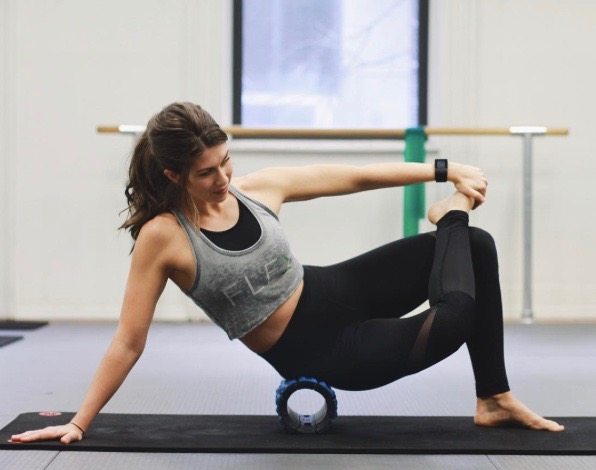
How to properly foam roll
There's no doubt: Foam rolling is great for releasing muscle tightness post-workout. "You should do a few inches at a time, and when you find that trigger point or adhesion, don’t just roll up and down, roll side to side too," Giordano advises, since the side-to-side motion will help release the sticking points.
But you can also use it as a warm-up tool, since it can increase blood flow to muscles and connective tissue to get you ready to work.
How long you roll is also important. According to Giordano, less than 30 seconds may not be enough to really change the tissue; more than two minutes, on the other hand, could lead to tissue bruising—which could have a negative impact since it'll take longer for the tissue to heal.
Ready to go? These are the exercises to focus on, depending on the workout you do the most often (modeled by BFX trainer Jenna Langhans at Soho Strength Lab).
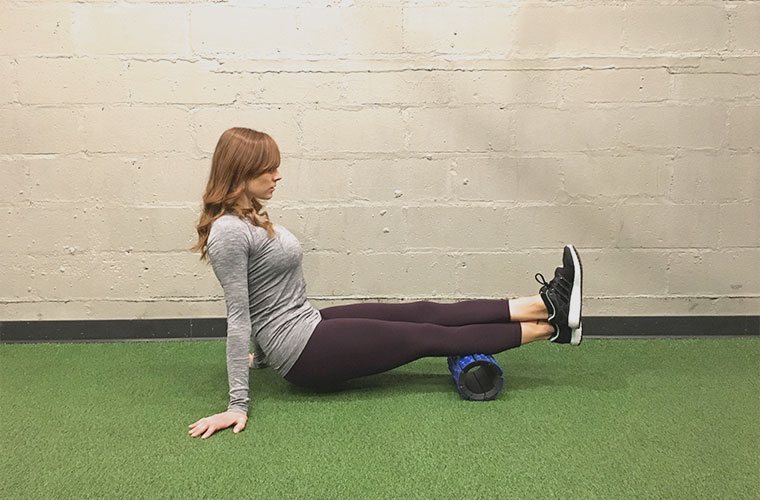
Running
Body part: calves
"Every time you push off your toes and propel yourself forward when you run, that’s pushing through the calf," Giordano says, "so that's the most common place that gets tight."
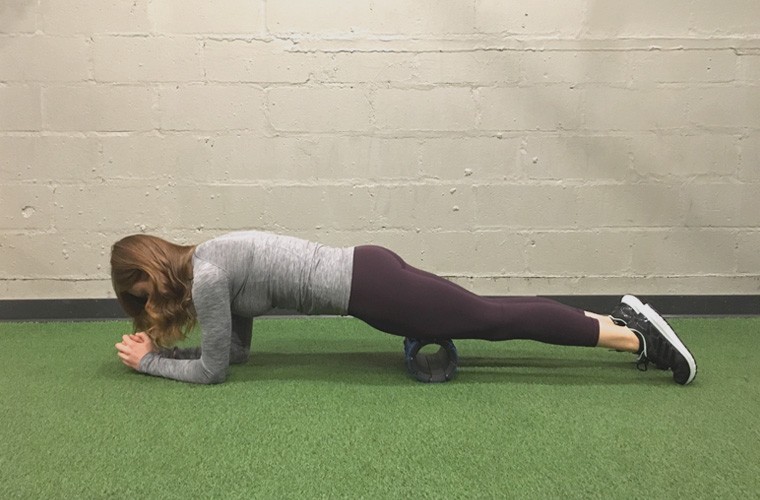
Spinning
Body part: quads
"When you spin, you work the quads, and also when you sit during the day, your quads and hip flexors get very tight," he says. It's super important to release tension there, since tight quads and hip flexors can cause you to rotate your pelvis forward when you sit, leading to lower back pain.
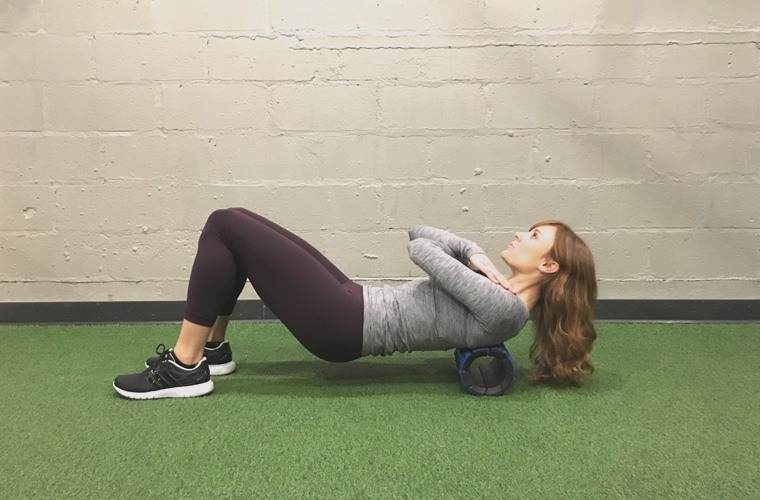
CrossFit or weight lifting
Body part: upper back
Doing tons of push-ups? You want to open up your back and protect the curvature of your spine. Plus, rolling this area can release tension that builds up from sitting for long periods of time and help improve posture, Giordano adds.
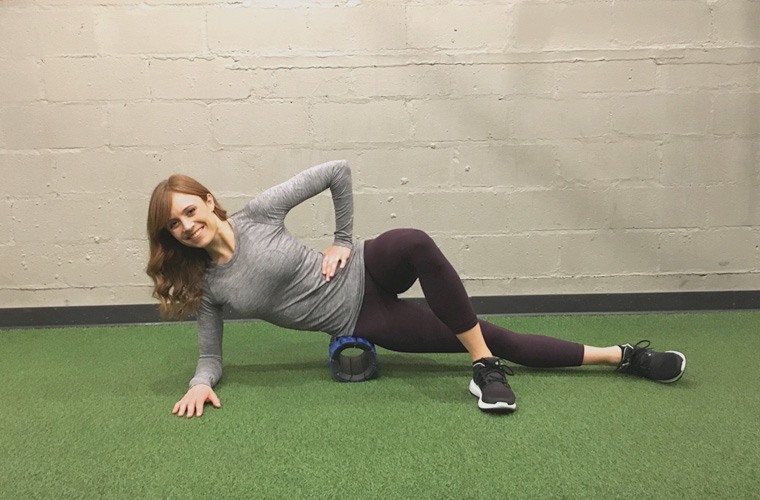
Barre
Body part: gluteus medius
If you've ever felt that burning sensation on the side of your butt during endless pulses at the barre, it'll make sense that rolling out your gluteus medius is essential afterward.
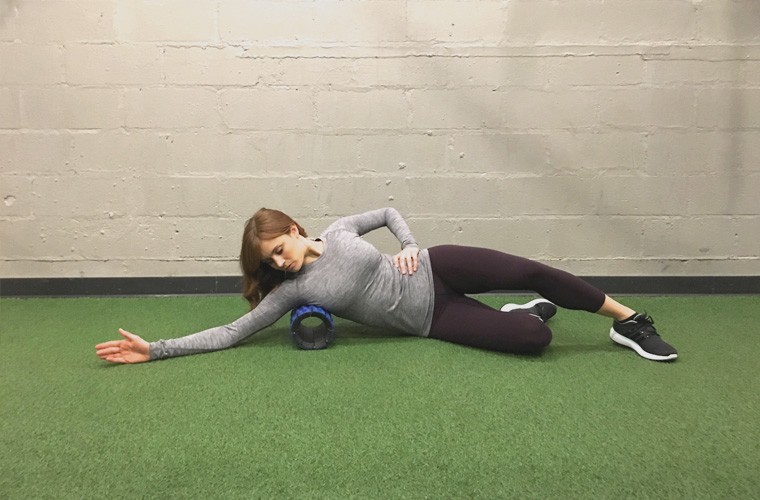
Boxing
Body part: lats
Boxing involves a hunched, rounded upper body position, and rolling the lats will help open things up, post-punching. It's crucial, Giordano says, since tight lats can put stress on your shoulders and lower back.
For more post-workout TLC, check out this new workout class that's totally focused on recovery. Plus, here are some healthy snacks to help you fuel up after you sweat it out.
Loading More Posts...